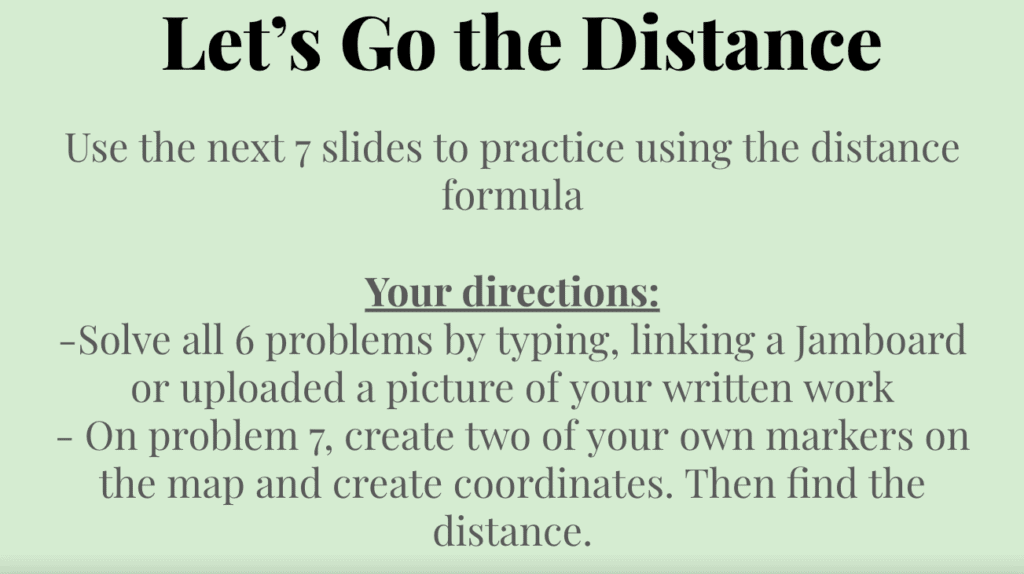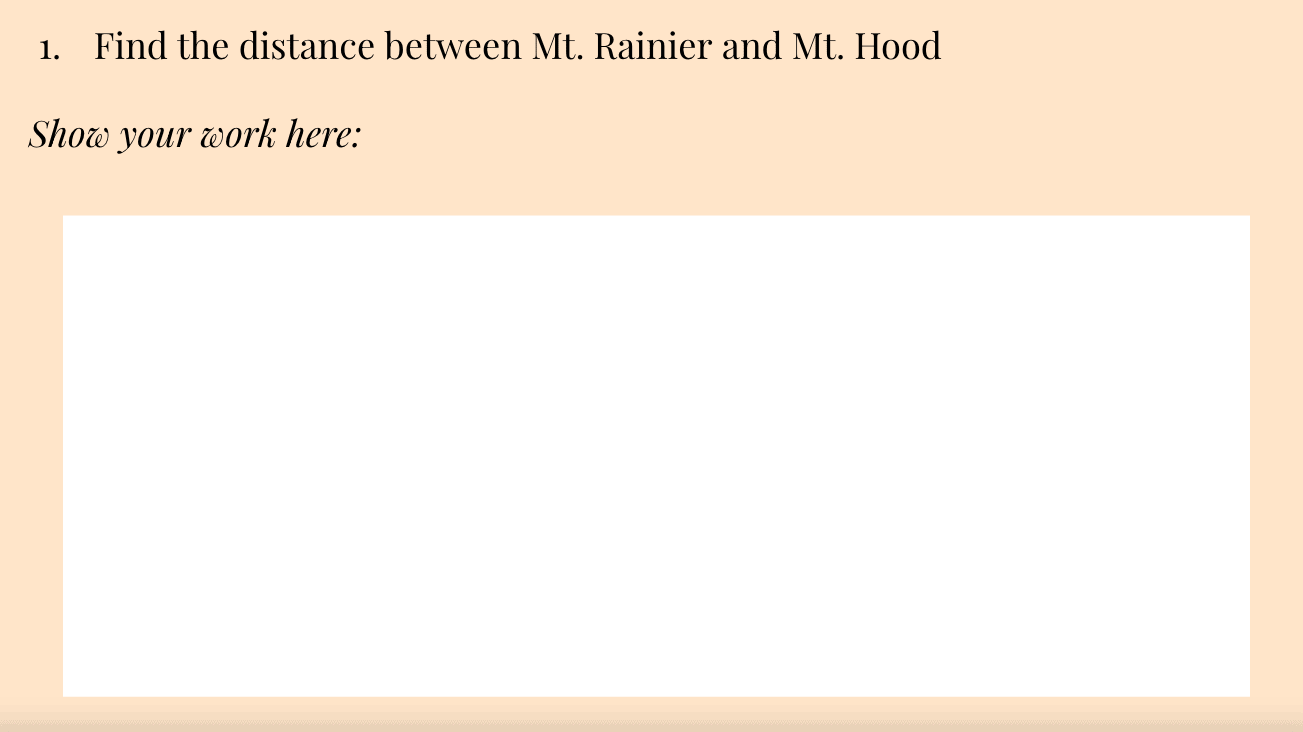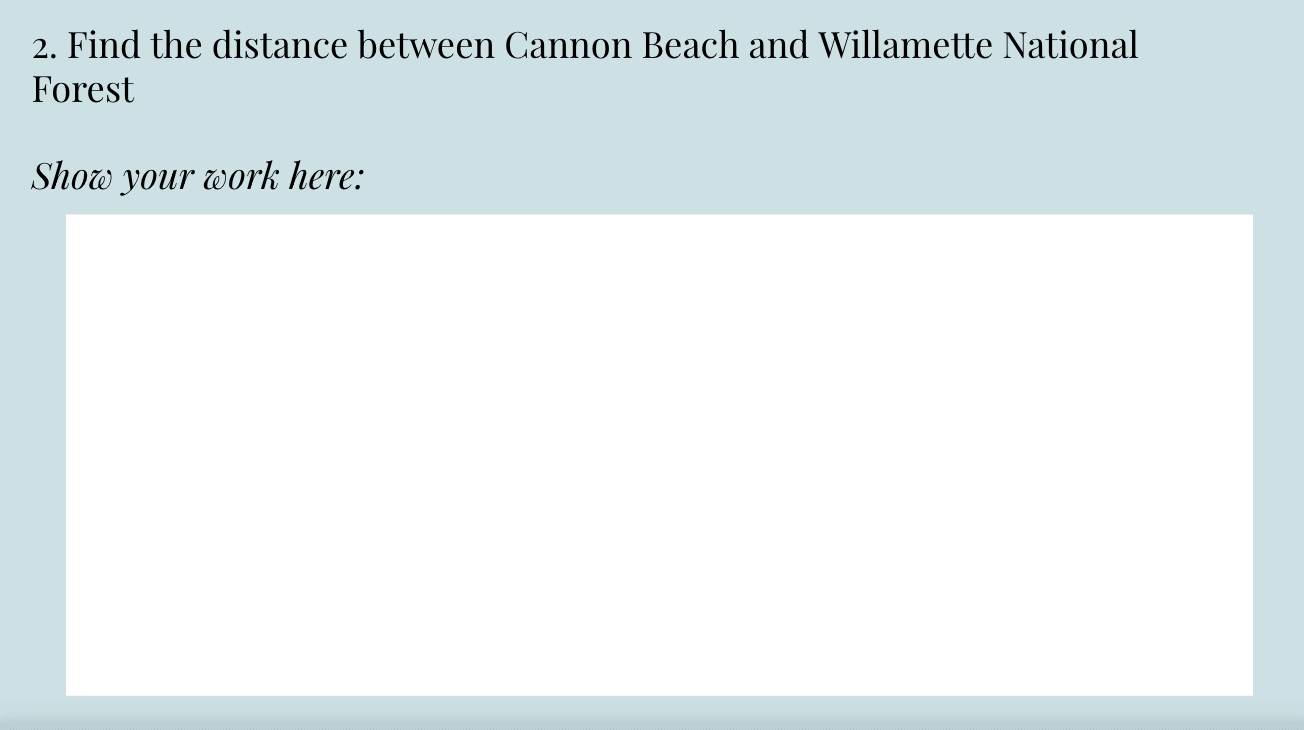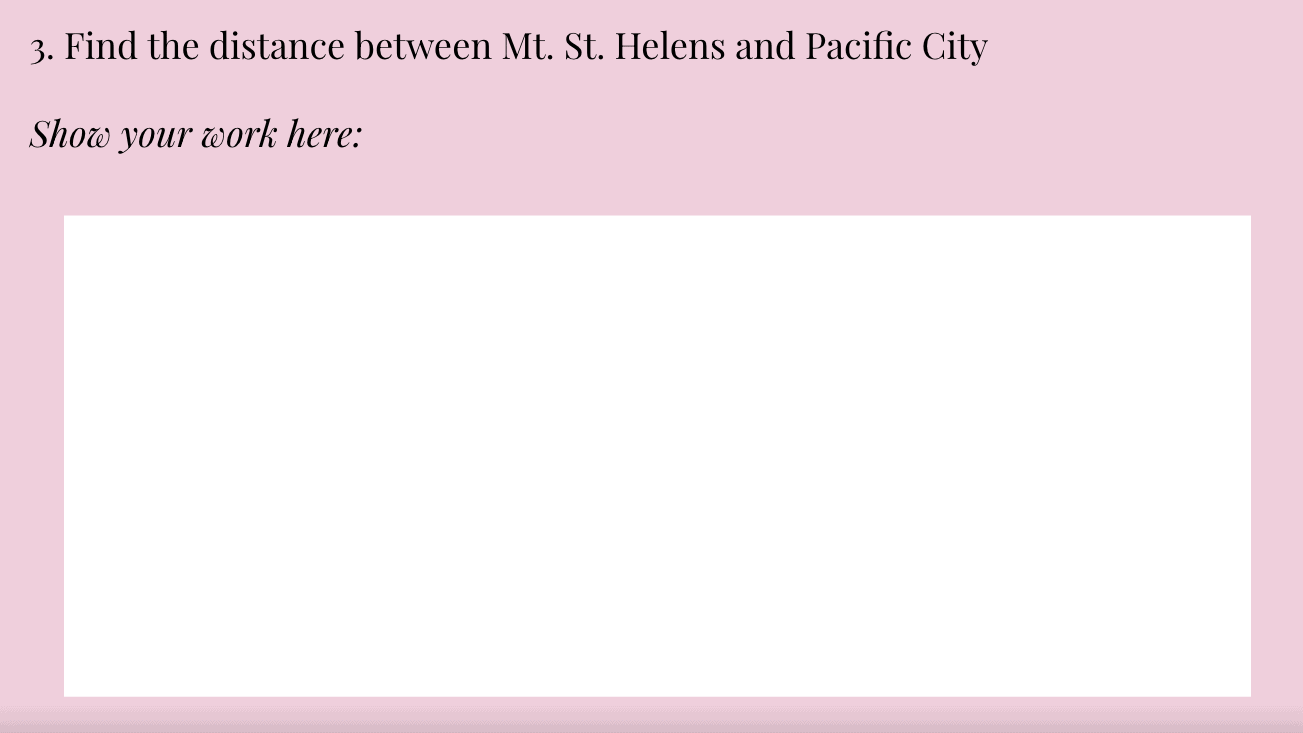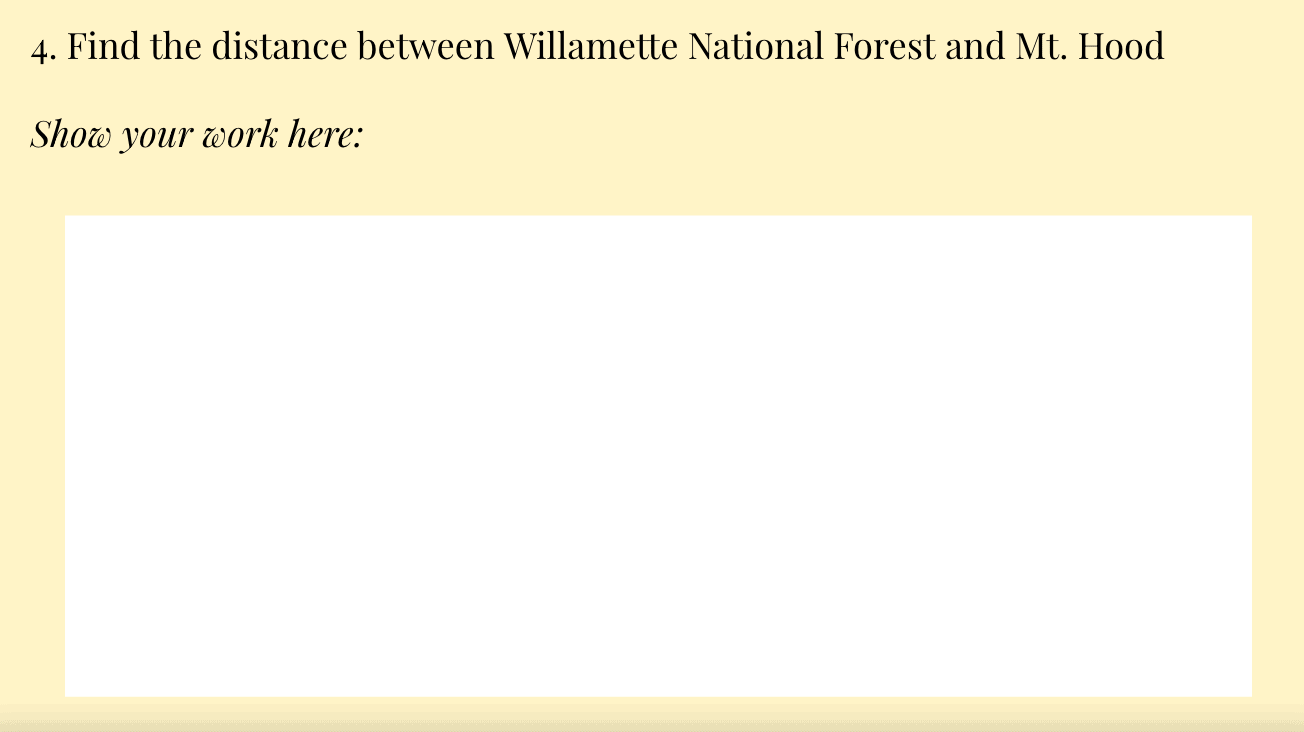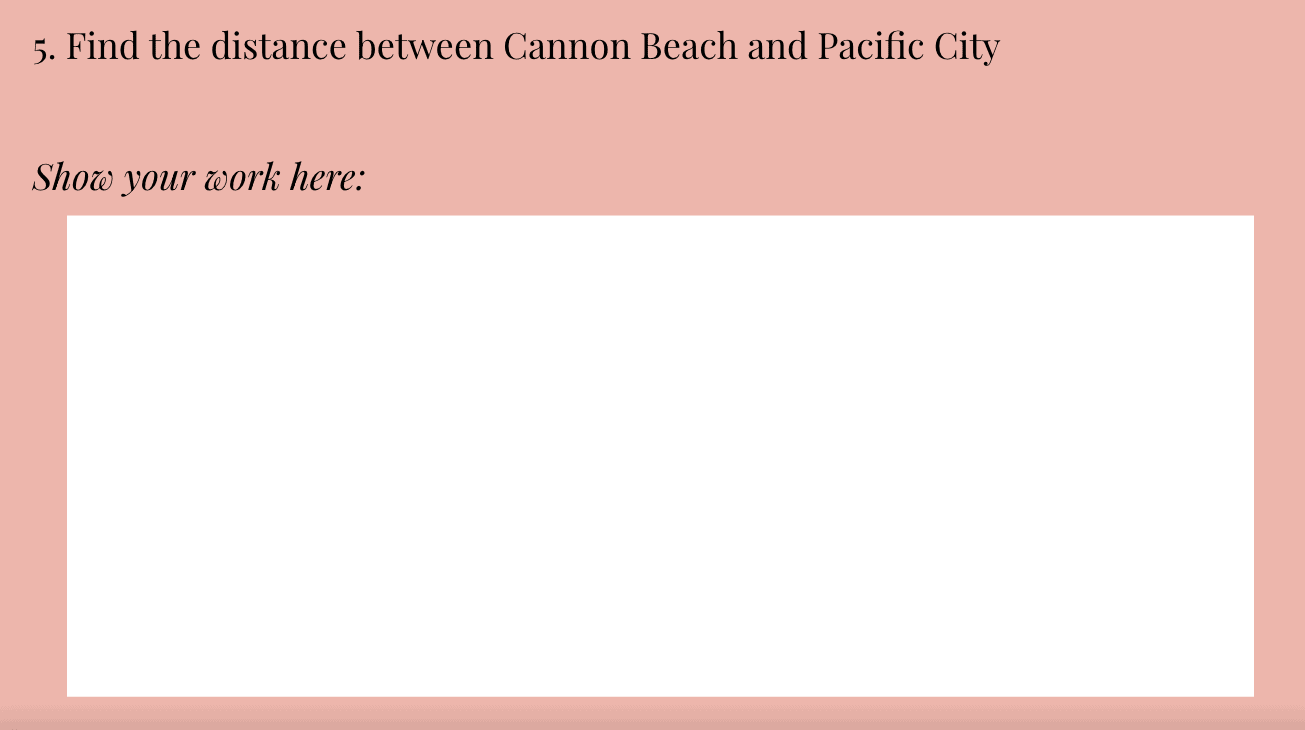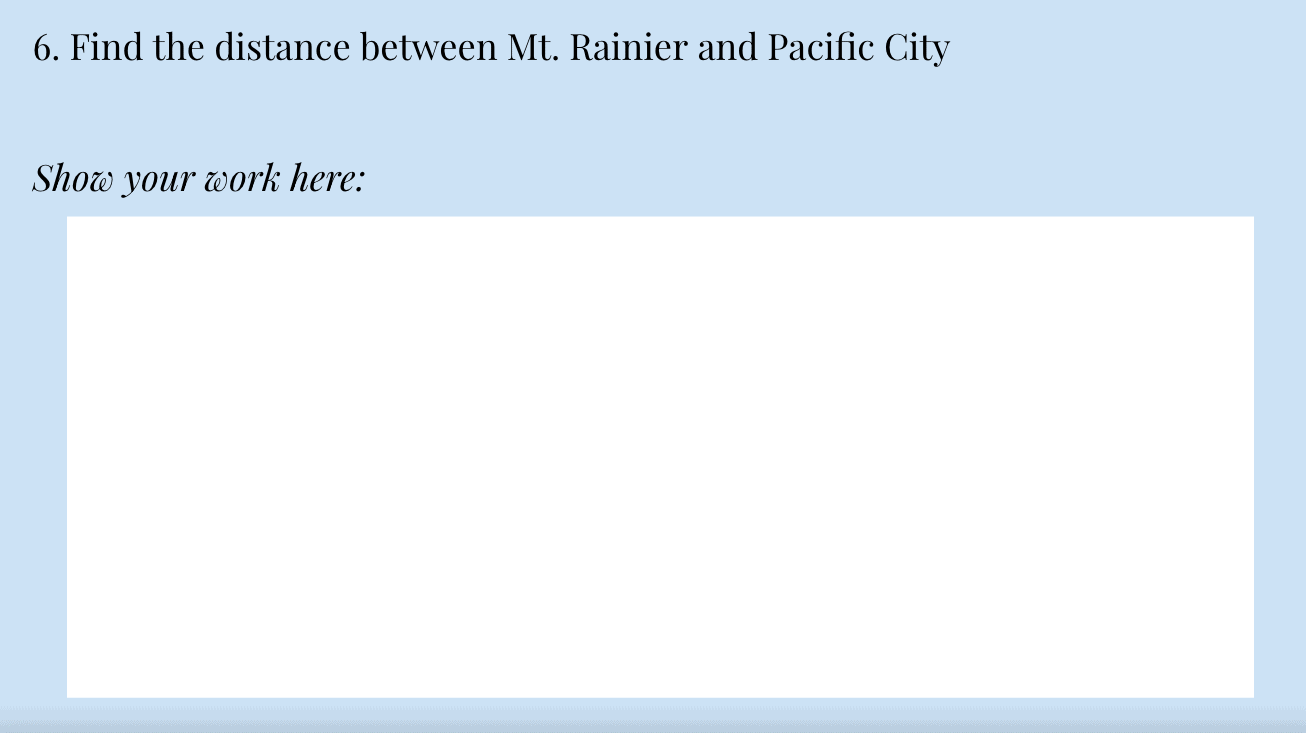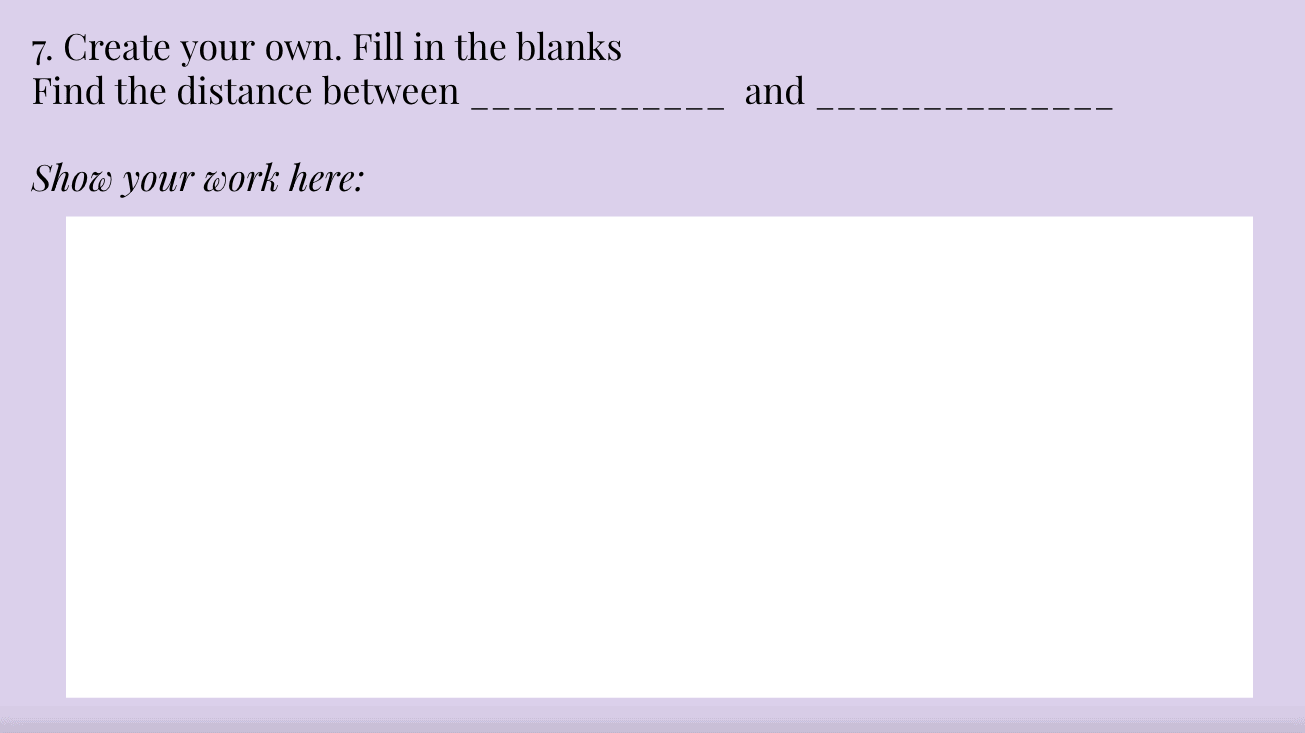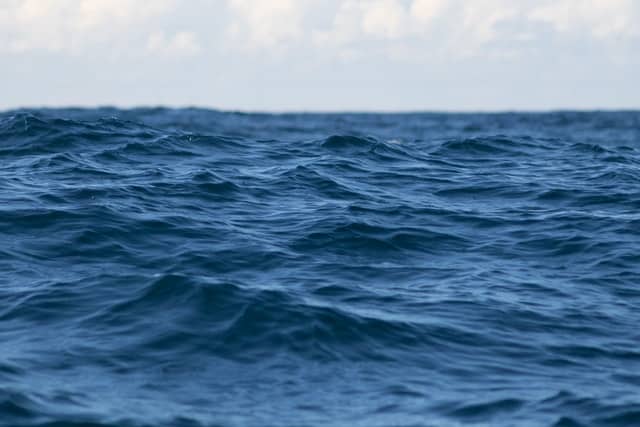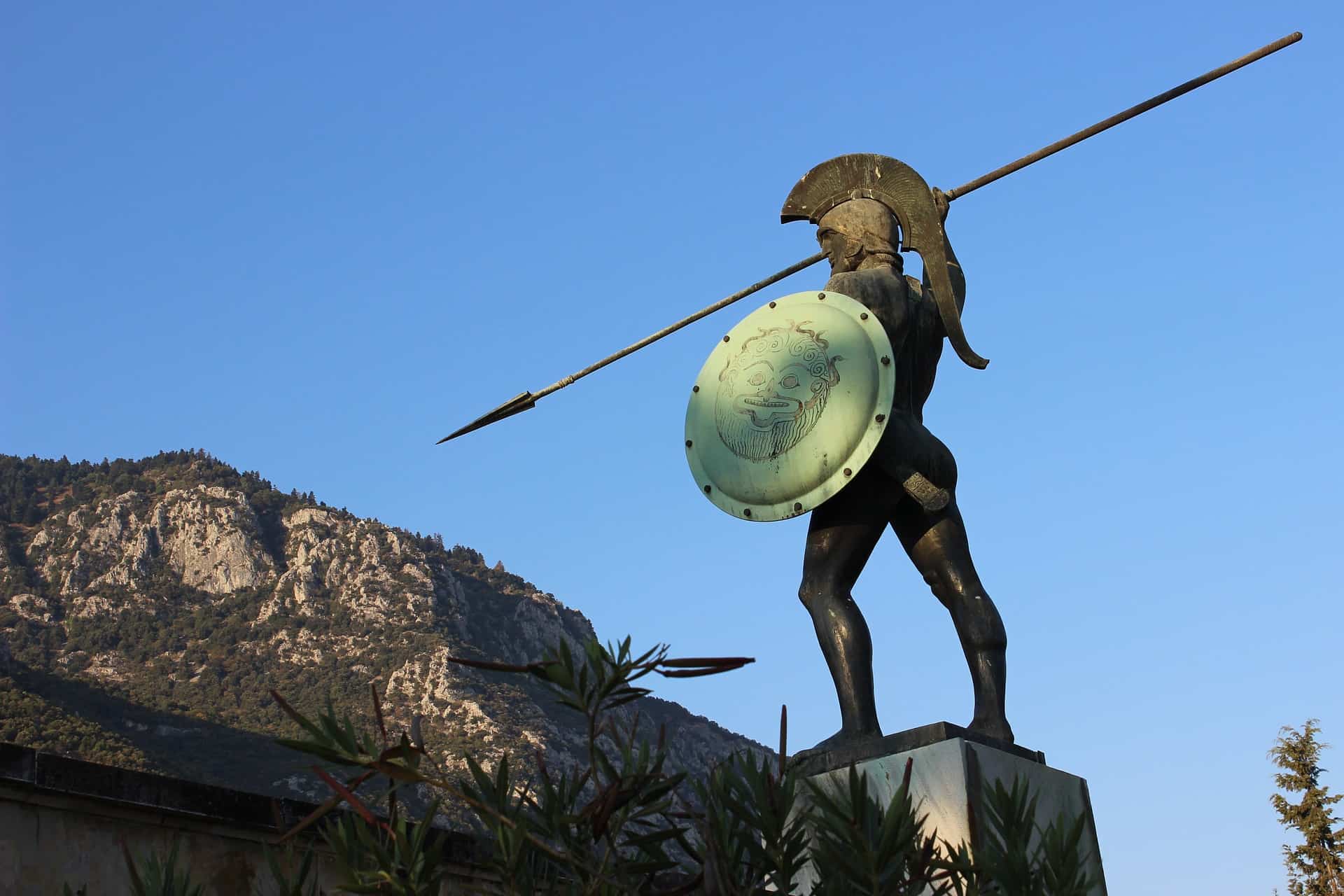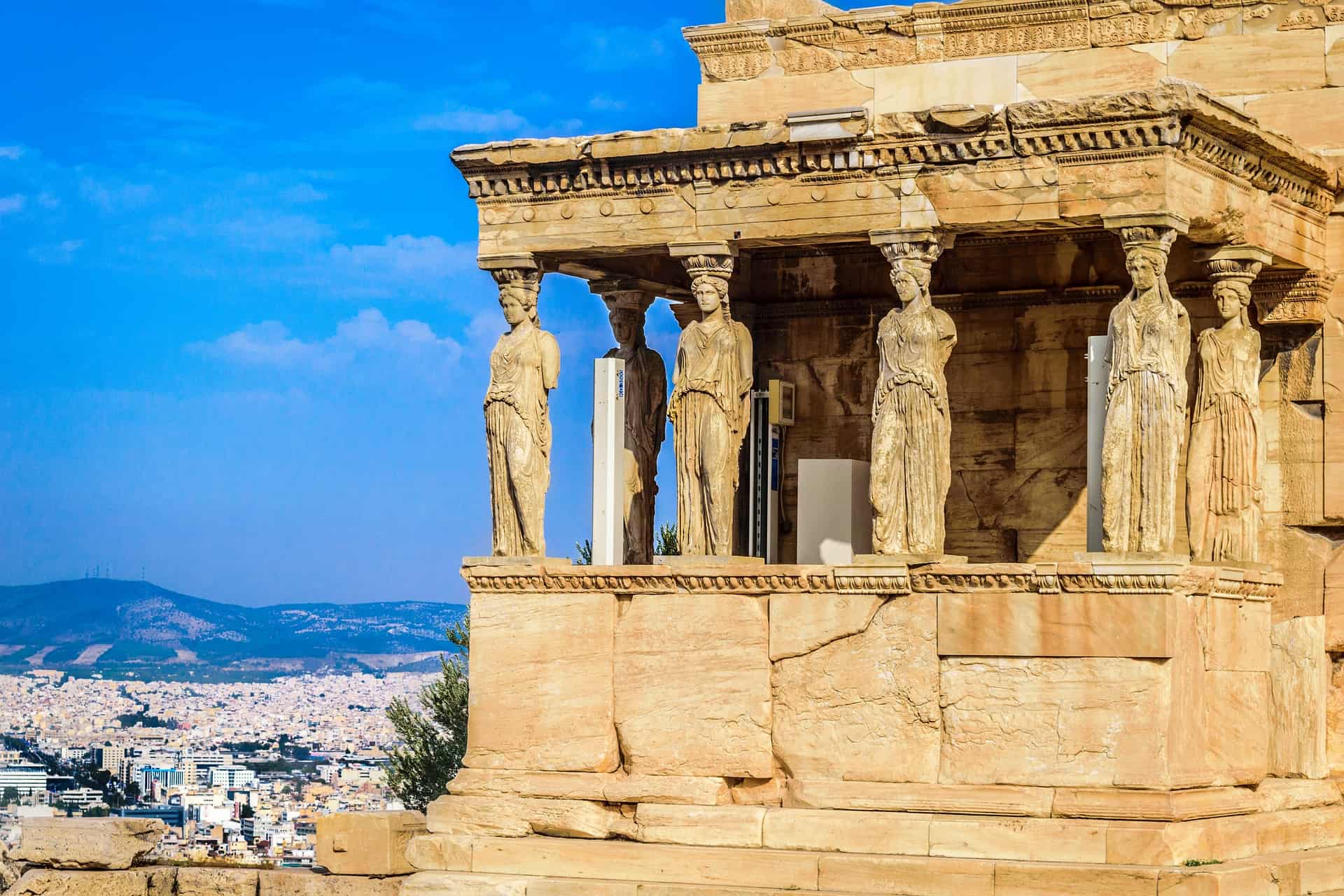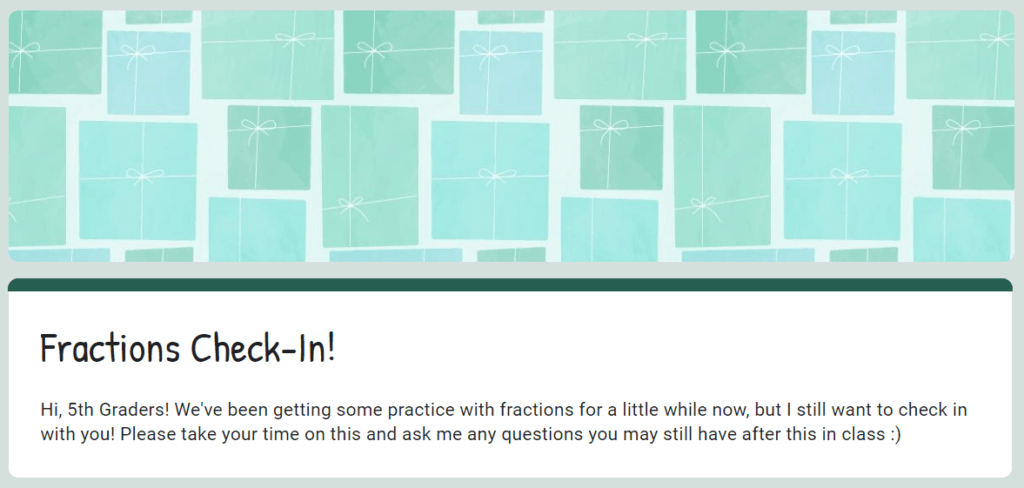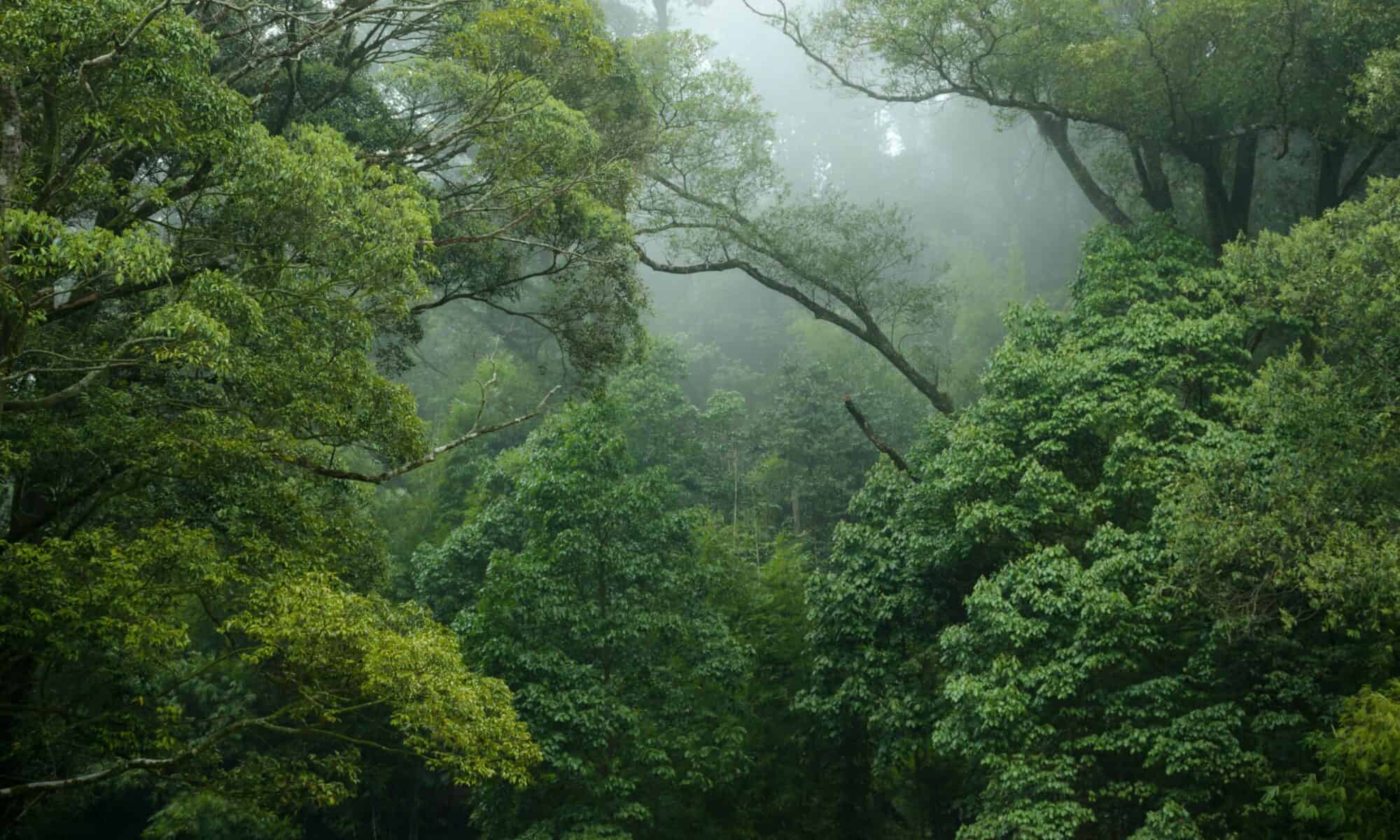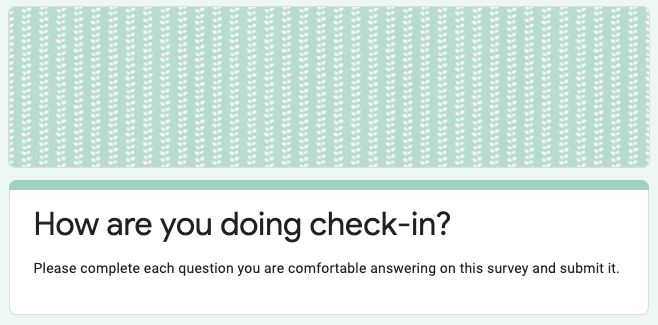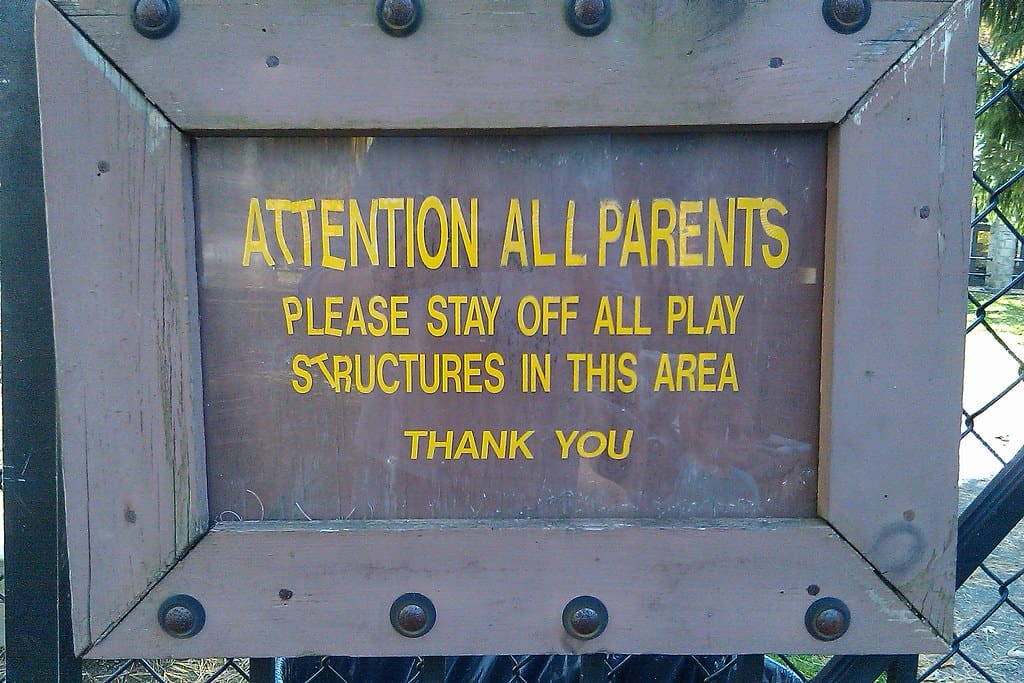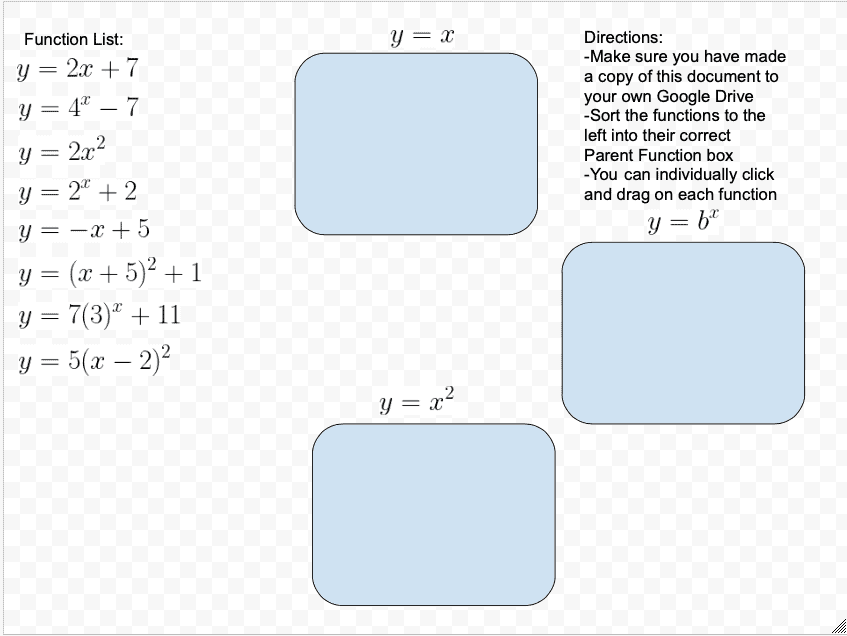Hey 8th graders! Today we are going to use Google Maps to practice using the distance formula. You will use the map and the slides linked below to complete 6 practice problems. Here are your directions:
- Open the Google Map in a separate tab. Become familiar with the points that are plotted on the map. We have fun locations in the PNW like Mt. St. Helens, Cannon Beach and much more!
2. Click the link below to create your individual copy the slides. This is where you will complete all of your work. You may do so by writing on the slides, linking a Jamboard or uploaded a picture of written work.
3. Find the distance between the points written on the Google slide. In order to find the coordinates of each place, click the blue marker and the coordinates will be written below. Portland’s coordinates are 0,0.
4. Once you have completed all 6 of the practice problems. Make 2 of your own new locations on the map and find the distance between them. Take a screenshot of your two locations and use the distance formula again to solve.
Goal:
The goal of this activity is to have students practice using distance formula with coordinates in a fun and interactive way. This allows for the students to gain a conceptual understanding of what it means when we use the distance formula to find the length between two points. This activity also asks the students to practice with their procedural knowledge. I wanted to base the map in Portland that way my students have a better understanding of where the places are.


